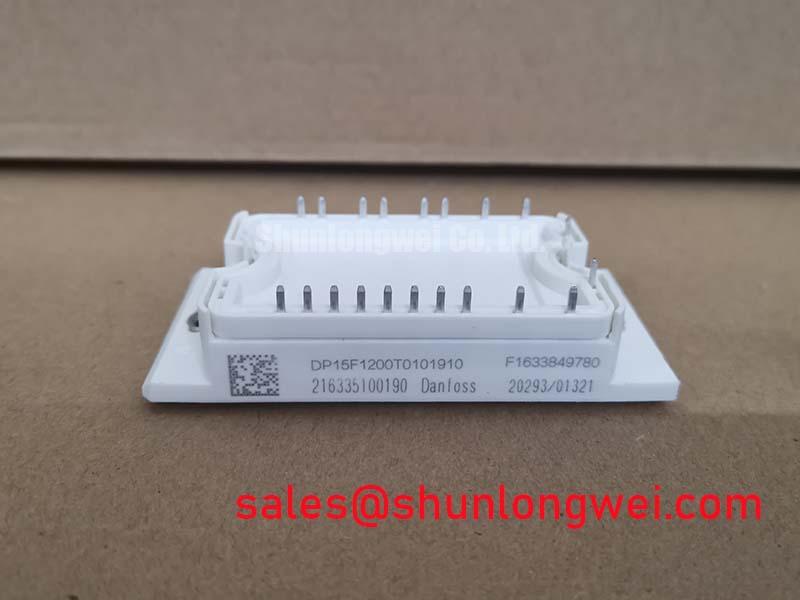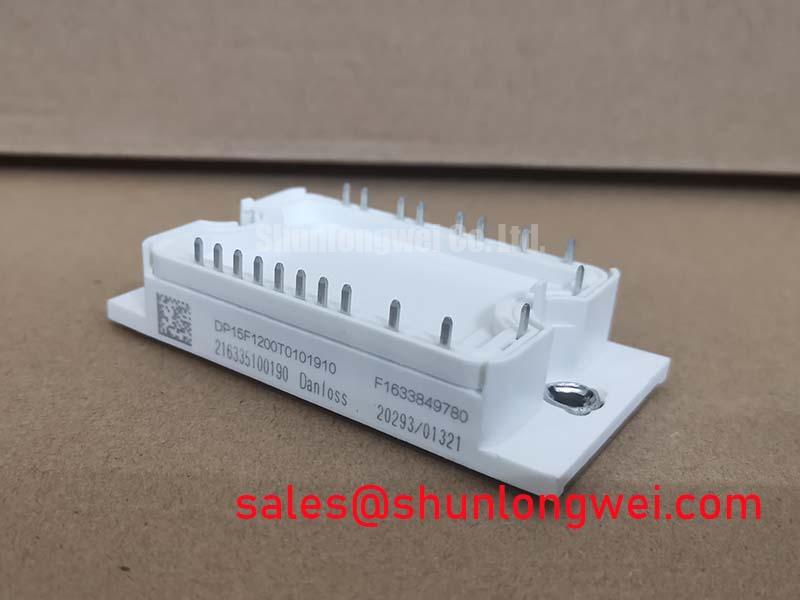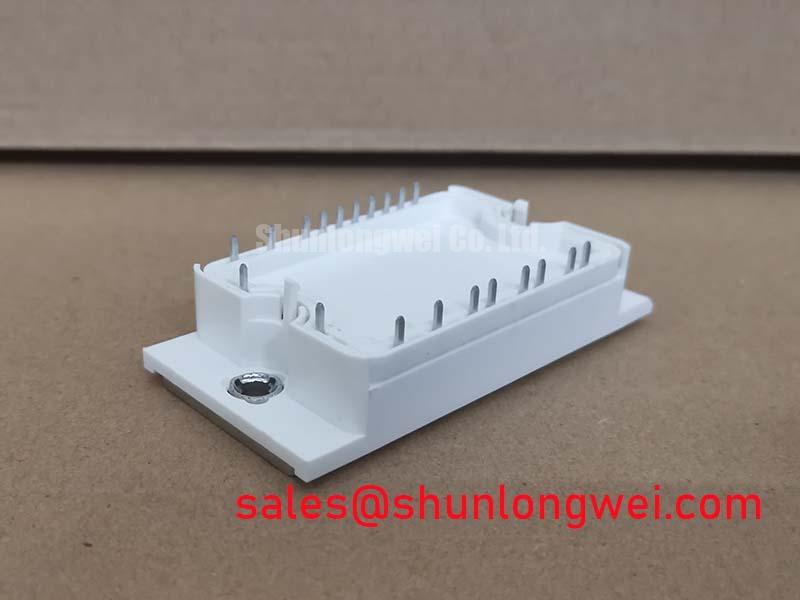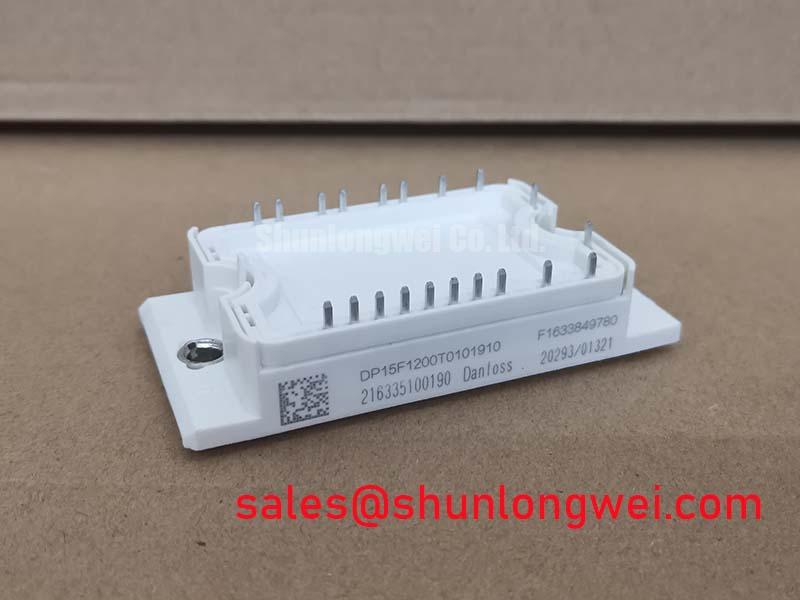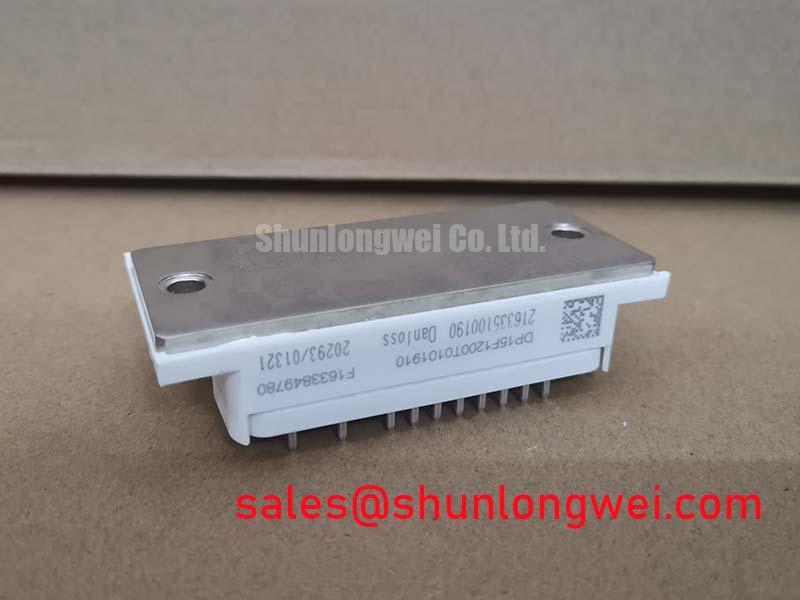Content last revised on November 20, 2025
DP15F1200T0101910: Technical Review of a 7-in-1 Integrated IGBT for Compact Power Systems
An Engineer's Guide to a Highly Integrated Power Module
The DP15F1200T0101910 is a highly integrated power module designed to streamline the development of low-power motor drives and power conversion systems. This component consolidates a three-phase inverter, a brake chopper, and a full three-phase rectifier bridge into a single compact package. Its core value lies in delivering a complete power stage solution that significantly reduces system complexity and enhances thermal efficiency. With key specifications of 1200V | 15A | VCE(sat) 2.1V (typ), its primary engineering benefits include a drastically reduced PCB footprint and minimized conduction losses. For engineers facing the challenge of designing compact yet efficient variable frequency drives, this module offers a compelling alternative to discrete component designs. What is the primary benefit of its 7-in-1 design? A simplified power stage layout with fewer components, reducing assembly time and potential points of failure.
Key Parameter Overview
Decoding the Specs for Efficient Power Stage Design
The technical specifications of the DP15F1200T0101910 are tailored for applications where efficiency and space are critical design constraints. The parameters below, sourced from the official datasheet, provide the foundation for robust system design and performance simulation.
| Parameter | Value | Engineering Interpretation & Value |
|---|---|---|
| Inverter Section - Collector-Emitter Voltage (Vces) | 1200V | Provides a substantial safety margin for applications operating on 380V to 480V AC lines, ensuring reliable performance during voltage transient events. |
| Inverter Section - Continuous Collector Current (Ic) | 15A (at Tc = 80°C) | Defines the module's capacity for continuous operation, making it suitable for driving motors up to approximately 2.2kW to 4kW, depending on the specific application and cooling conditions. |
| Inverter Section - Collector-Emitter Saturation Voltage (VCE(sat)) | 2.1V (Typical, at Tj=25°C, Ic=15A) | This low saturation voltage is a direct indicator of efficiency. It minimizes power lost as heat during the on-state (conduction losses), which reduces heatsink requirements and improves the overall energy efficiency of the Variable Frequency Drive (VFD). |
| Rectifier Section - Repetitive Peak Reverse Voltage (VRRM) | 1600V | The high reverse voltage rating of the input rectifier ensures robust operation even on unstable industrial grids with high-voltage spikes. |
| Isolation Voltage (Viso) | 2500V (AC, 1 minute) | Guarantees high electrical isolation between the power terminals and the mounting baseplate, a critical safety feature that simplifies system-level safety compliance (e.g., UL/IEC standards). |
| Integrated NTC Thermistor (R25) | 5 kΩ (Typical) | Allows for real-time monitoring of the module's internal temperature, enabling precise over-temperature protection logic in the control system and enhancing long-term operational reliability. |
Application Scenarios & Value
System-Level Benefits in Compact Motor Control
For systems requiring a compact, all-in-one power conversion solution, the DP15F1200T0101910 is an optimal choice. Its high level of integration makes it particularly valuable in applications where reducing the physical size and component count of the power electronics is a primary objective. The most compelling use case is in the design of small-scale AC motor drives and servo amplifiers.
Consider the engineering challenge of developing a compact VFD for a conveyor belt system. The goal is to fit the entire drive into a constrained enclosure while maintaining high efficiency to minimize heat buildup. By using the DP15F1200T0101910, an engineer immediately eliminates the need for a separate three-phase diode bridge, a brake chopper transistor, and six individual inverter IGBTs. This consolidation directly translates to a smaller, less complex PCB layout, which in turn reduces manufacturing costs and potential electromagnetic interference (EMI) due to shorter power connections. The module's low VCE(sat) further supports this goal by reducing the thermal load, potentially allowing for a smaller heatsink or even convection cooling in lower-power scenarios. This module is ideally suited for applications like general-purpose inverters, small machinery, and auxiliary power units within larger systems. While this module is designed for lower power ranges, for systems demanding higher current handling in a similar voltage class, the BSM150GT120DN2 provides a much higher current capability.
Technical Deep Dive
Impact of 7-in-1 Topology on Power Stage Design
The integrated 7-in-1 topology of the DP15F1200T0101910 offers more than just space savings; it fundamentally streamlines the power stage design process. In a discrete-component design, engineers must meticulously lay out the rectifier diodes, brake IGBT, and inverter IGBTs, paying close attention to minimizing parasitic inductance in the high-current paths, especially the DC bus link. High parasitic inductance can cause significant voltage overshoots during fast switching, stressing the components and creating EMI. The DP15F1200T0101910 mitigates this challenge by co-locating all power stages within a single, optimized package. The internal connections are engineered by the manufacturer for low inductance, providing a cleaner DC bus voltage and simplifying the external snubber and capacitor design. This pre-optimized layout acts as a force multiplier for design teams, allowing them to focus on control logic and system integration rather than wrestling with the complexities of power stage PCB layout.
Frequently Asked Questions (FAQ)
What is the main advantage of the 7-in-1 integration in the DP15F1200T0101910?
The primary advantage is system simplification. It combines the AC-to-DC rectification, DC bus braking, and DC-to-AC inversion stages into one component. This significantly reduces the number of parts on the bill of materials, shrinks the required PCB area, and simplifies the assembly process, leading to lower overall system costs.
How does the VCE(sat) of 2.1V impact my design's thermal management?
A lower VCE(sat) directly translates to lower conduction losses (Power Loss = VCE(sat) * Ic). With a typical value of 2.1V at 15A, the heat generated by each IGBT during operation is minimized. This reduction in waste heat means a smaller, less expensive heatsink may be used, and in some cases, it can reduce or eliminate the need for forced-air cooling, which is a major benefit for creating quiet and reliable systems.
What is the purpose of the integrated NTC thermistor?
The NTC thermistor provides a means for real-time temperature monitoring of the module's substrate. Its resistance decreases predictably as temperature increases. A microcontroller can read this resistance value to infer the operating temperature, allowing the implementation of crucial safety features like power derating at high temperatures or a complete system shutdown to prevent thermal runaway and catastrophic failure.
Is this module suitable for 480V AC industrial applications?
Yes. The 1200V Vces rating of the inverter section provides a sufficient voltage margin to operate safely on 480V AC lines, which typically produce a DC bus voltage of around 650-680V. This margin is essential for handling the voltage spikes and transients commonly found in industrial environments, as detailed by standards from organizations like NEMA.
How does the integrated rectifier bridge simplify the input stage design?
The built-in three-phase rectifier eliminates the need for selecting and mounting six individual rectifier diodes. This not only saves space but also ensures that the diodes are thermally matched and cooled via the module's baseplate, simplifying the thermal design of the entire front-end power stage.
From an engineer's perspective, the DP15F1200T0101910 is less a single component and more of a pre-validated subsystem. It abstracts away the low-level complexities of power stage layout and component selection, enabling faster development cycles for compact, cost-sensitive, and reliable motor control applications. Its value is most pronounced in designs where time-to-market and a reduced manufacturing overhead are as critical as electrical performance.

